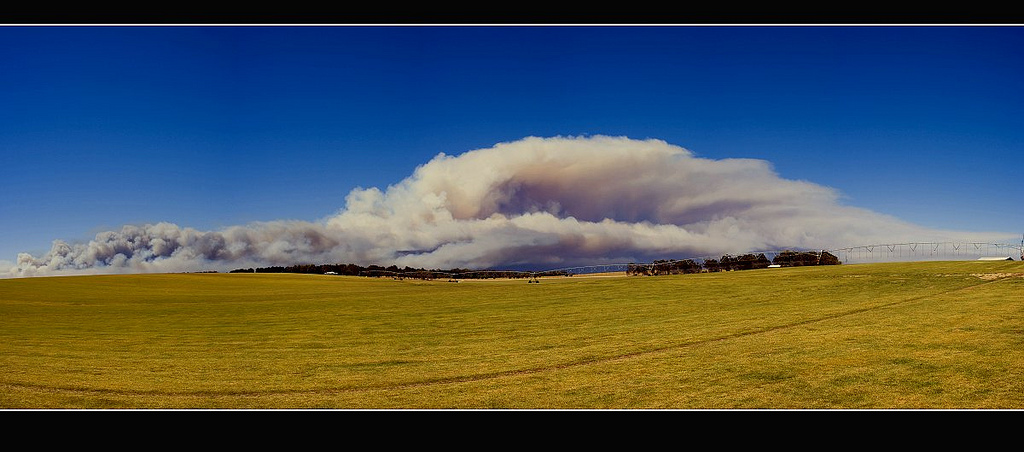Most of us look forward to summer; lazy days spent on the beach, enjoying the idyllic scenery. But here in Australia the approach of summer is now anticipated with a sense of dread because we know that with summer, in addition to our glorious long, sun-filled days, we can expect to see our forests to burn, our cattle starve and our elderly and infirm collapse from the pressures of the extreme weather.
2013 was the hottest year on Australia’s record. The year was, to put it lightly, intense. We suffered through what became known as the ‘Angry Summer’. The optimistic among us convinced themselves that this was a passing anomaly – a phenomenon which would not be repeated for several years to come. And then, after our warmest winter ever, before we knew it our towns and cities were once again filled with smoke, as large chunks of New South Wales (NSW) caught fire in an early start to the bushfire season.
This summer, across the continent we experienced the gamut of summertime extreme weather events – heat wave, drought, rainfall extremes (both high and low) and of course the terrors of bushfire.
Severe drought was experienced in much of inland Eastern Australia and Sydney had the driest summer in 27 years. Record temperatures were broken across the country with prolonged, intense heat waves experienced in major population centres. Canberra endured 20 days of at least 35 degrees heat and its third hottest summer on record
Perth had its second hottest summer ever and the poor people of Adelaide sweated through 11 days with temperatures exceeding 42 degrees. Melbourne experienced its hottest 24 hours ever, while in south-east Queensland extreme heat caused over 100,000 bats to fall dead from the sky. Bush fires swept through 280,000 hectares of Victorian bush land, as well as in Perth Hills and parts of South Australia. It was some summer.
And although none of this is new in a country that endures one of the fiercest climates on the planet, at some point we need to ask ourselves “when does ‘extreme’ become normal?”
Pretty soon if we take into account the latest reports by the Intergovernmental Panel on Climate Change (IPCC). According to these reports, events like these are likely to continue with disastrous impacts on our land, our economy and our health.
None of this is particularly new information. Climate scientists have been warning us for years about the consequences of ignoring climate change, yet our politicians and captains of industry continue, by and large, to overlook this inconvenient truth.
Luckily, the people of Australia are starting to come to terms with the fact that any change to our current path is likely going to be lead by them and not the policy makers. This summer, for the first time ever, hundreds of Australians from different walks of life have risked arrest to blockade a live coal mine and show that it is no longer socially acceptable to profit from climate change.
They have taken to ‘extreme’ action to combat the extreme weather because they know, if we do nothing, our country will continue to burn down around us.

Bush fires in Western Australia, Yachep National park. Photo credit: Flickr